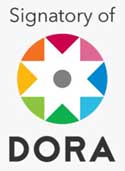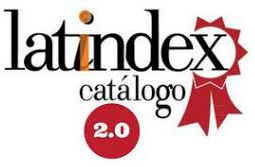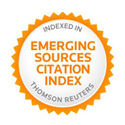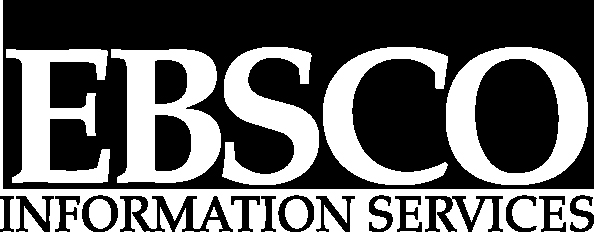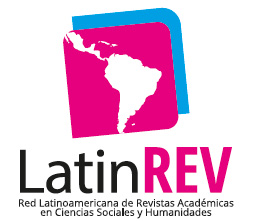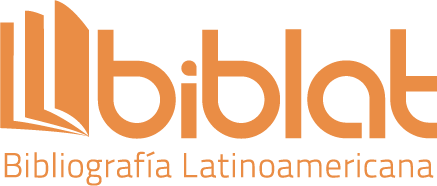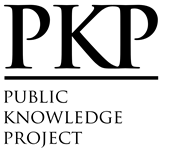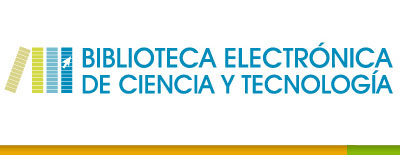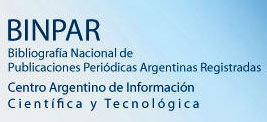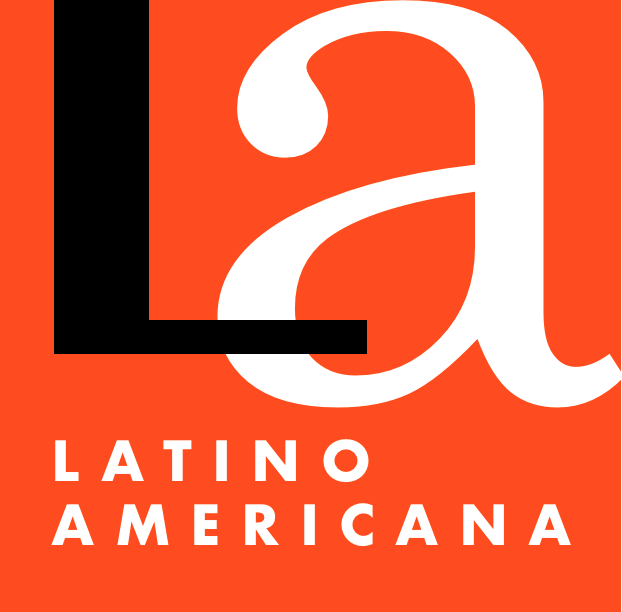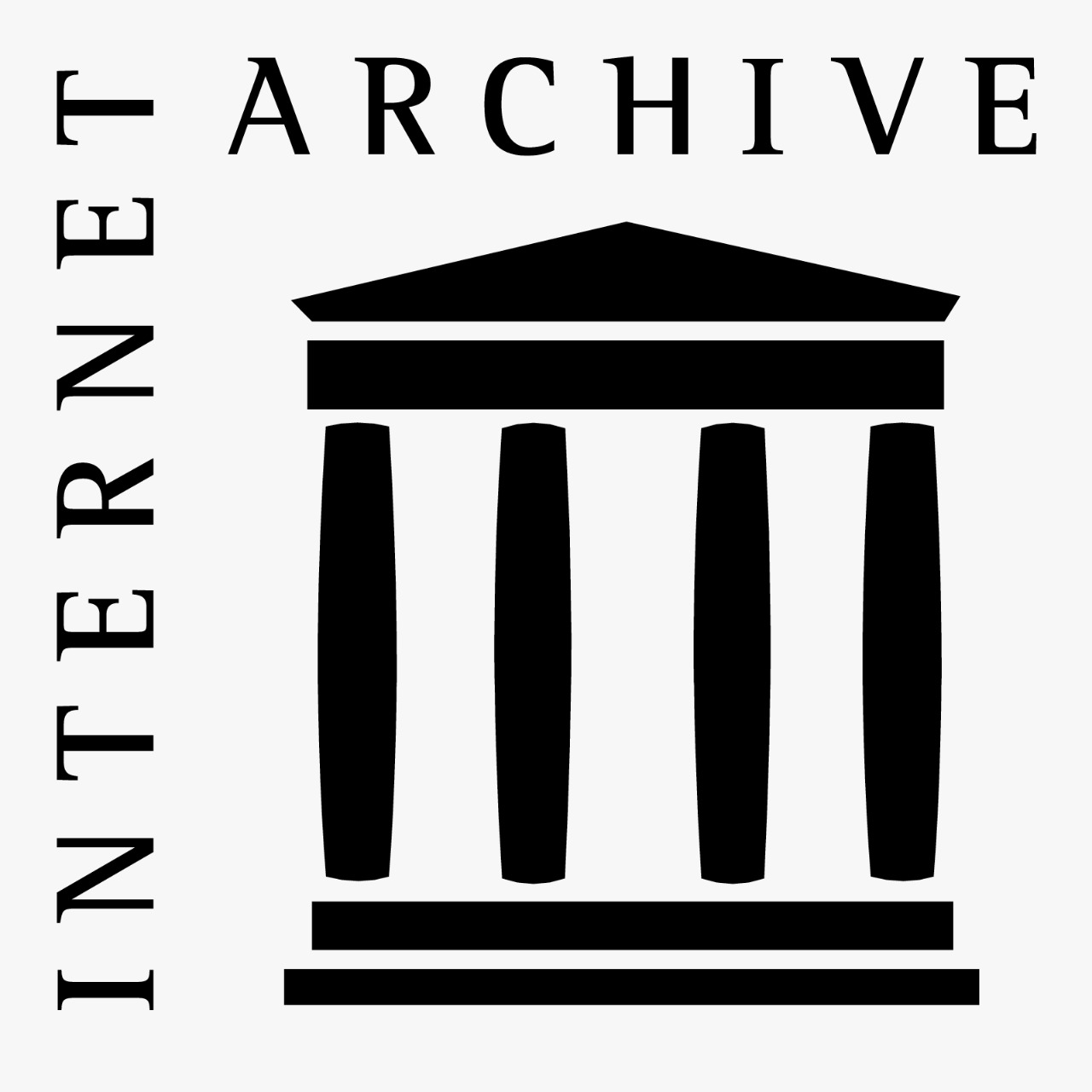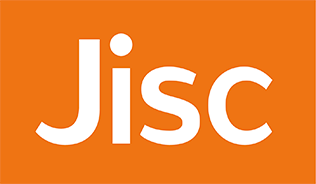Revisão sobre o rol do profissional de relações públicas
DOI:
https://doi.org/10.26422/aucom.2017.0602.arzPalavras-chave:
relações públicas, comunicação organizacional, rol profissional, tipologia de rolesResumo
Este artigo parte das abordagens profissionais nos estudos das relações públicas e apresenta as diferentes tipologias e formas de conceber o rol profissional, desde as primeiras pesquisas sobre este
campo disciplinar, com os estudos de Glen M. Broom e David M. Dozier na década de 1980, até a
atualidade, em que as mudanças tecnológicas e o contexto mundial geram novas expectativas para
desempenho deste rol. A revisão foi enquadrada nas publicações científicas da coleção principal de
Web of Science que foram classificadas segundo qual fosse sua abordagem: sobre o desempenho
do rol dos profissionais, sobre a situação na que se desempenha o rol, ou sobre a dinâmica dos roles
profissionais. Neste trabalho se conclui que a maioria das tipologias sobre o rol do profissional das
relações públicas está baseada nas declarações dos profissionais sobre as atividades desempenhadas e sobre as funções ou contribuições do rol para as organizações. Entre os assuntos que a literatura observa sobre o rol do profissional das relações públicas, predominam: as tensões entre o rol
do profissional das relações públicas e o jornalista; a discriminação segundo o sexo do profissional;
as propostas de tipologias de rol, y a descrição das competências e habilidades que são requeridas
para o desempenho do rol.
Downloads
Referências
Algren, M., & Eichhorn, K. C. (2007). Cognitive communication competence within public relations practitioners: Examining gender differences between technicians and managers. Public Relations Review, 33, 77-83. doi: https://doi.org/10.1016/j.pubrev.2006.11.010.
Alikilic, O., & Atabek, U. (2012). Social media adoption among Turkish public relations professionals: A survey of practitioners. Public Relations Review, 38(1), 56-63. doi: https://doi.org/10.1016/j.pubrev.2011.11.002.
Argyris, C. (1961). Explorations in Consulting-Clients Relationships. Human Organization, 20(3), 121-133. doi: https://doi.org/10.17730/humo.20.3.62kj82j7u834tk40.
Berkowitz, D., & Hristodoulakis, I. (1999). Practitioner Roles, Public Relations Education, and Professional Socialization: An Exploratory Study. Journal of Public Relations Research, 11(1), 91-103. doi: https://doi.org/10.1207/s1532754xjprr1101_04.
Berkowitz, D., & Lee, J. (2004). Media relations in Korea: Cheong between journalist and public relations practitioners. Public Relations Review, 30(4), 431-437. doi: https://doi.org/10.1016/j.pubrev.2004.08.011.
Botan, C. H., & Taylor, M. (2004). Public Relations: State of the Field. Journal of Communication, 54(4), 645-661. doi: https://doi.org/10.1111/j.1460-2466.2004.tb02649.x .
Broom, G. M., & Smith, G. D. (1979). Testing the Practitioners’s Impact on Clients. Public Relations Review, 5(3), 47-59. doi: https://doi.org/10.1016/S0363-8111(79)80027-2.
Broom, G., & Dozier, D. (1986). Advancement for public relations role models. Public Relations Review, 12(1), 37-56. doi: https://doi.org/10.1016/S0363-8111(86)80039-X .
Brown, K. A., White, C., & Waymer, D. (2011). African-American students’ perceptions of public relations education and practice: implications for minority recruitment. Public Relations Review, 4(5), 522-529. doi: https://doi.org/10.1016/j.pubrev.2011.09.017.
Callison, C., Merle, P. F., & Seltzer, T. (2014). Smart friendly liars: Public perception of public relations practitioners over time. Public Relations Review, 40(5), 829-831. doi: https://doi.org/10.1016/j.pubrev.2014.09.003.
Castillo Esparcia, A. (2009). Relaciones Públicas. Teoría e historia. Barcelona, España: UOC.
Chen, Y.-N. K. (2011). Social capital, human capital, and career success in public relations in Taiwan. Chinese Journal of Communication, 4(4), 430-449. doi: https://doi.org/10.1080/17544750.2011.616290.
Cutlip, S. M., & Center, A. H. (1971). Effective Public Relations (4 ed). Englewood Cliffs, NJ: Prentice Hall.
DeSanto, B., & Moss, D. (2005). Rediscovering what PR managers do: Rethinking the measurement of managerial behavior in the public relations context. Journal of Communication Management, 9(2), 179-196. doi: https://doi.org/10.1108/13632540510621371.
DeSanto, B., Moss, D., & Newman, A. (2007). Building an Understanding of the Main Elements of Management in the Communication/Public Relations Context: A Study of U. S. Practitioners’ Practices. J&MC Quarterly, 84(3), 439-454. doi: https://doi.org/10.1177/107769900708400303.
Dodd, M. D., Brummette, J., & Hazleton, V. (2015). A social capital approach: An examination of Putnam´s civic engagement and public relation roles. Public Relations Review, 41(4), 472-479. doi: https://doi.org/10.1016/j.pubrev.2015.05.001.
Dozier, D. M. (1984). Program Evaluation and the roles of practitioners. Public Relations Review, 10(2), 13-21. doi: https://doi.org/10.1016/S0363-8111(84)80002-8.
Dozier, D. M. (1985). Planning and Evaluation in PR Practice. Public Relations Review, 11(2), 17-25. doi: https://doi.org/10.1016/S0363-8111(82)80115-X .
Dozier, D. M., & Broom, G. M. (1995). Evolution of the manager role in public relations practice. Journal of Public Relations Research, 7(1), 3-26. doi: https://doi.org/10.1207/s1532754xjprr0701_02.
Dozier, D. M., & Broom, G. M. (2006). The Centrality of Practitioner Roles to Public Relations Theory. En C. H. Botan, & V. Hazleton, Public Relations Theory II (pp. 137-170). New York, NY: Routledge.
Ferguson, M. A. (1984). Building theory in public relations: Interorganizational relationships as public relations paradigm. Annual Conference of the Association for Education in Journalism and Mass Communication. Gainesville, FL.
Frohlich, R., Koch, T., & Obermaier, M. (2013). What´s the harm in moonlighting? A qualitative survey on the role conflicts of freelance journalists with secondary employment in the field of PR. Media, Culture & Society, 35(7), 809-829. doi: https://doi.org/10.1177/0163443713495076.
Gregory, A. (2008). Competencies of senior communication practitioners in the UK: An initial study. Public Relations Review, 34, 215-223. doi: https://doi.org/10.1016/j.pubrev.2008.04.005.
Gregory, A. (2015). Practitioner-leaders’ representation of roles: The Melbourne Mandate. Public Relations Review, 41(5), 598-606. doi: https://doi.org/10.1016/j.pubrev.2014.02.030.
Grunig, J. E. (1992). Excellence in public relations and communication management. Hillsdale, NJ: Lawrence Erlbaum.
Grunig, J. E., & Huang, Y. H. (2000). From organizational effectiveness to relationship indicators: Antecedents of relationships, public relations strategies, and relationship outcomes. En J. A. Ledingham, & S. D. Bruning, Public relations as relationship management: A relational approach to the study and practice of public relations (pp. 23-53). Hillsdale, NJ: Erlbaum.
Grunig, J. E., & Hunt, T. (1984). Managing public relations (Dirección de relaciones públicas). New York, NJ: Holt, Rinehart & Winston.
Guth, D. (1995). Organizational crisis experience and Public-Relations roles. Public Relations Review, 21(2), 123-136. doi: https://doi.org/10.1016/0363-8111(95)90003-9.
Ha, J. H., & Ferguson, M. A. (2015). Perception discrepancy of public relations functions and conflict among disciplines: South Korean public relations versus marketing professionals. Journal of Public Relations Research, 27(1), 1-21. doi: https://doi.org/10.1080/1062726X.2014.924838.
Han, J. Y., Hyun, S., & Jeong, H. (2013). Individual and organizational antecedents of professional ethics of public relations practitioners in Korea. Journal of Business Ethics, 116(3), 553-566. doi: https://doi.org/10.1007/s10551-012-1480-6.
Heath, R., Leth, S., & Nathan, K. (1994). Communicating services quality improvement-Another role for Public-Relations. Public Relations Review, 20(1), 29-39. doi: https://doi.org/10.1016/0363-8111(94)90112-0.
Hu, Y., & Pang, A. (2016). Public relations practitioner’s perception of the use of crisis response strategies in China. Public Relations Review, 42(2), 333-335. doi: https:// doi.org/10.1016/j.pubrev.2016.02.006.
Hutton, J. (1999). The definition, dimensions and domains of public relations. Public Relations Review, 25(2), 199-214. doi: https://doi.org/10.1016/S0363-8111(99)80162-3.
Jiang, H., & Shen, H. (2013). Toward a theory of public relations practitioners’ own conflict: work versus life. Journal of Public Relations Research, 25, 259-279. doi: https://doi.org/10.1080/1062726X.2013.788446.
Kang, J.-A. (2010). Ethical conflict and job satisfaction of public relations practitioners. Public Relations Review, 36(2), 152-156. doi: https://doi.org/10.1016/j.pubrev.2009.11.001.
Kiambi, D. M., & Nadler, M. K. (2012). Public relations in Kenya: An exploration of models and cultural influences. Public Relations Review, 38(3), 505-507. doi: https://doi.org/10.1016/j.pubrev.2012.01.007.
Kim, S.-Y., & Reber, B. H. (2015). Public relations’ place in corporate social responsibility: Practitioners define their role. Public Relations Review, 34(4), 337-342. doi: https://doi.org/10.1016/j.pubrev.2008.07.003.
Kim, Y., & Bae, J. (2006). Korean practitioners and journalists: Relational influences in news selection. Public Relations Review, 32(3), 241-245. doi: https://doi.org/10.1016/j.pubrev.2006.05.016.
Kim, Y., & Kim, S.-Y. (2010). The influence of cultural values on perceptions of corporate social responsibility: Application of Hofstede’s dimensions to Korean public relations practitioners. Journal of Business Ethics, 91(4), 485-500. doi: https://doi.org/10.1007/s10551-009-0095-z .
Krohling Kunsch, M. M., & Nassar de Oliveira, P. R. (2009). The relationship between the academy and professional organizations in the development of organizational communication. Management Communication Quarterly, 22(4), 655-662. doi: https://doi.org/10.1177/0893318909332276.
L´Etang, J. (2009). Relaciones públicas: conceptos, práctica y crítica. Barcelona, España: UOC (primera edición en inglés 2008, Sage).
Lauzen, M. (1992). Public relations roles, intraorganizational power, and encroachment. Journal of Public Relations Research, 4(2), 61-80. doi: https://doi.org/10.1207/s1532754xjprr0402_01.
Le Roux, T. (2014). The description of South African corporate communication practitioners that contribute to organisational performance. Public Relations Review, 40(2), 193-215. doi: https://doi.org/10.1016/j.pubrev.2013.11.008.
Lee, N. M., Sha, B.-L., Dozier, D. M., & et al. (2015). The role of new public relations practitioners as social media experts. Public Relations Review, 41(3), 411-413. doi: https://doi.org/10.1016/j.pubrev.2015.05.002.
Leichty, G., & Springston, J. (1993). Reconsidering public relations models. Public Relations Review, 19(4), 327-339. doi: https://doi.org/10.1016/0363-8111(93)90055-H .
Leichty, G., & Springston, J. (1996). Elaborating public relations roles. Journalism and Mass Communication Quaterly, 73(2), 467-477. doi: https://doi.org/10.1177/107769909607300215.
Li, C., Cropp, F., Sims, W., & Jin, Y. (2012). Perceived professional standards and roles of public relations in China: Through the lens of Chinese public relations practitioners. Public Relations Review, 38(5), 704-710. doi: https://doi.org/10.1016/j.pubrev.2012.05.001.
Lin, S., & Chaidaroon, S. (2016). Developing a Preliminary Model of Situational PR Leadership: Empirical Evidence from Singapore. Asia Pacific Public Relations Journal, 17(2), 28-45. Recuperado de http://novaojs.newcastle.edu.au/apprj/index.php/apprj/article/view/79.
Liu, B. F., Horsley, J. S., & Levenshus, A. B. (2010). Government and Corporate Communication Practices: Do the Differences Matter? Journal of Applied Communication Research, 38(2), 189-213. doi: https://doi.org/10.1080/00909881003639528.
Macnamara, J. (2016). The continuing Convergence of Journalism and PR: New Insights for Ethical Practice From a Three-Country Study of Senior Practitioners. Journalism & Mass Communication Quarterly, 93(1), 118-141. doi: https://doi.org/10.1177/1077699015605803.
Mellado, C., & Barría, S. (2012). Development of professional roles in the practice of public relations in Chile. Public Relations Review, 38(3), 446-453. doi: https://doi.org/10.1016/j.pubrev.2012.04.001.
Mellado, C., & Hanusch, F. (2011). Comparing professional identities, attitudes, and views in public communication: A study of Chilean journalists and public relations practitioners. Public Relations Review, 37(4), 384-391. doi: https://doi.org/10.1016/j.pubrev.2011.08.014.
Molleda, J., & Athaydes, A. (2003). Public Relations licensing in Brazil: evolution and the views of professionals. Public Relations Review, 29(3), 271-279. doi: https://doi.org/10.1016/S0363-8111(03)00045-6.
Molleda, J.-C., & Ferguson, M. A. (2004). Public Relations Roles in Brazil: Hierarchy Eclipses Gender Differences. Journal of Public Relations Research, 16(4), 327-351. doi: https://doi.org/10.1207/s1532754xjprr1604_1.
Moreno, A., Navarro, C., Tench, R., & Zerfass, A. (2015). Does social media usage matter? An analysis of online practices and digital media perceptions of communication practitioners in Europe. Public Relations Review, 41(2), 242-253. doi: https://doi.org/10.1016/j.pubrev.2014.12.006.
Moss, D., & Green, R. (2002). Re-examining the manager’s role in public relations: What management and public relations research. Journal of Communication Management, 6(2), 118-132. doi: https://doi.org/10.1108/13632540210806982.
Moss, D., Newman, A., & DeSanto, B. (2005). What Do Communication Managers Do? Defining and Refining the Core Elements of Management in Public Relations/Corporate Communication Context. J&MC Quarterly, 8(4), 873-890. doi: https://doi.org/10.1177/107769900508200408.
Moss, D., Warnaby, G., & Newman, A. (2000). Public relations practitioner role enactment at the senior management level within U.K. companies. Journal of Public Relations Research, 12(4), 277-307. doi: https://doi.org/10.1207/S1532754XJPRR1204_1.
Napoli, P., Taylor, M., & Powers, G. (1999). Writing activities of public relations practitioners: The relationship between experience and writing tasks. Public Relations Review, 25(3), 369-380. doi: https://doi.org/10.1016/S0363-8111(99)00024-7.
Neijins, P., & Smit, E. (2006). Dutch public relations practitioners and journalists: Antagonists no more. Public Relations Review, 32(3), 232-240. doi: https://doi.org/10.1016/j.pubrev.2006.05.015.
Obermaier, M., & Koch, T. (2014). Mind the gap: Consequences of inter-role conflicts of freelance journalists with secondary employment in the field of public relations. Journalism, 16(5), 615-629. doi: https://doi.org/10.1177/1464884914528142.
Penning, T., & Sweetser, K. (2015). Role enactment, employer type, and pursuit of APR. Public Relations Review, 41, 135-137. doi: https://doi.org/10.1016/j.pubrev.2014.11.016.
Porter, L. V., & Shallot, L. M. (2003). The Internet and public relations: investigating practitioners’ roles and World Wide Web use. Journalism & Mass Communication Quarterly, 80(3), 603-622. doi: https://doi.org/10.1177/107769900308000308.
Powell, M., & Pieczka, M. (2016). Understanding learning in senior public relations practices. From boundary spanning to boundary dwelling. Journal of Communication Management, 20(4), 312-327. doi: https://doi.org/10.1108/JCOM-11-2015-0093.
Sallot, L. M., Porter, L., & Acosta-Alzuru, C. (2004). Practitioners’ web use and perceptions of their own roles and power: A qualitative study. Public Relations Review, 30(3), 269-278. doi: https://doi.org/10.1016/j.pubrev.2004.05.002.
Sallot, L., Cameron, G., & Lariscy, R. (1997). Professional standards in public relations: A survey of educators. Public Relations Review, 23(3), 194-216. doi: https://doi.org/10.1016/S0363-8111(97)90032-1.
Schein, E. H. (1969). Process consultation: It´s role in organization development. Reading, MA: Addison-Wesley.
Sha, B., & Toth, E. (2005). Future professionals’ perceptions of work, life, and gender issues in public relations. Public Relations Review, 31(1), 93-99. doi: https://doi.org/10.1016/j.pubrev.2004.09.004.
Sha, B.-L. (2011). Accredited vs. non-accredited: The polarization of practitioners in the public relations profession. Public Relations Review, 37(2), 121-128. doi: https://doi.org/10.1016/j.pubrev.2011.02.003.
Shin, J., & Cameron, G. (2004). Conflict measurements: analysis of simultaneous inclusion in roles, values, independence, attitudes, and dyadic adjustment. Public Relations Review, 30, 401-410. doi: https://doi.org/10.1016/j.pubrev.2004.08.001.
Shin, J., Park, J., & Cameron, G. (2006). Contingent factors: Modeling generic public relations practice in South Korea. Public Relations Review, 32(2), 184-185. doi: https://doi.org/10.1016/j.pubrev.2006.02.015.
Shin, J.-H., Lee, J., & Park, J. (2012). Perceptual dynamics of pluralistic ignorance and social distance: public relations practitioners and journalists in South Korea. Asian Journal of Communication, 22(1), 19-43. doi: https://doi.org/10.1080/01292986.2011.622773.
Spicer, C. (1991). Communication functions performed by public relations and marketing Practitioners. Public Relations Review, 17(3), 293-305. doi: https://doi.org/10.1016/0363-8111(91)90024-F .
Supa, D. W. (2016). Do you see what I see? An examination of perceptions between advertising and public relations professionals. Public Relations Review, 42(3), 408-417. doi: https://doi.org/10.1016/j.pubrev.2016.02.007.
Sweep, D., Cameron, G. T., & Weaver-Lariscy, R. (1994). Rethinking constraints on public relations practice. Public Relations Review, 20(4), 319-331. doi: https://doi.org/10.1016/0363-8111(94)90093-0.
Todd, V. (2014). Public relations supervisors and Millennial entry-level practitioners rate entry-level job skills and professional characteristics. Public Relations Review, 40(5), 789-797. doi: https://doi.org/10.1016/j.pubrev.2014.05.002.
Toledano, M. (2010). Professional competition and cooperation in the digital age: A pilot study of New Zealand practitioners. Public Relations Review, 36(3), 230-237. doi: https://doi.org/10.1016/j.pubrev.2010.04.009.
Toth, E. L. (1988). Making peace with gender issues in public relations. Public Relations Review, 14(3), 36-47. doi: https://doi.org/10.1016/S0363-8111(88)80046-8.
Toth, E., Serini, S., Wright, D., & Emig, A. (1998). Trends in public relations roles: 1990-1995. Public Relations Review, 24(2), 145-163. doi: https://doi.org/10.1016/S0363-8111(99)80048-4.
Ulloa, C., Apolo, D., & Villalobos, J. (2015). Aproximación conceptual a la comunicación corporativa: retos y propuestas. Austral Comunicación, 4(2), 287-301. Recuperado de http://www.austral.edu.ar/ojs/index.php/australcomunicacion/article/view/137.
Van Gorp, B., & Pauwels, L. (2007). Positioning and role of public relations in large Belgian organizations. Public Relations Review, 33(3), 301-305. doi: https://doi.org/10.1016/j.pubrev.2007.05.010.
Van Ruler, B. (2004). The communication grid: an introduction of a model of four communication strategies. Public Relations Review, 30(2), 123-143. doi: https://doi.org/10.1016/j.pubrev.2004.01.002.
Van Ruler, B., Verčič, D., Bütschi, G., & Flodin, B. (2001). On the definition of public relations: a European view. Public Relations Review, 27(4), 373-387. doi: https://doi.org/10.1016/S0363-8111(01)00095-9.
Van Ruler, B., Verčič, D., Bütschi, G., & Flodin, B. (2004). A first look for parameters of public relations in Europe. Journal of Public Relations Research, 16(1), 35-63.doi: https://doi.org/10.1207/s1532754xjprr1601_2.
Vasquez, G., & Taylor, M. (1999). What cultural values influence American public relations practitioners? Public Relations Review, 25(4), 433-449. doi: https://doi.org/10.1016/S0363-8111(99)00030-2.
Verčič, A. T., & Colić, V. (2016). Journalists and public relations specialists: A coorientational analysis. Public Relations Review, 42(4), 522-529. doi: https://doi.org/10.1016/j.pubrev.2016.03.007.
Vieira Jr, E. T., & Grantham, S. (2014). Defining public relations roles in the U.S.A. using cluster analysis. Public Relations Review, 40(1), 60-68. doi: https://doi.org/10.1016/j.pubrev.2013.11.021.
Wolf, K. (2016). Diversity in Australian Public Relations: an exploration of practitioner perspectives. Asia Pacific Public Relations Journal, 17(2), 62-77. Recuperado de http://novaojs.newcastle.edu.au/apprj/index.php/apprj/article/view/66.
Xifra, J. (2011). Manual de Relaciones Públicas e institucionales. Madrid, España: Tecnos.
Yaxley, H. (2013). Career experiences of women in British public relations (1970-1989). Public Relations Review, 39(2), 156-165. doi: https://doi.org/10.1016/j.pubrev.2013.03.009.
Yeo, S. L., & Sriramesh, K. (2009). Adding value to organizations: An examination of the role of senior public relations practitioners in Singapore. Public Relations Review, 35(4), 422-425. doi: https://doi.org/10.1016/j.pubrev.2009.08.003.
Downloads
Publicado
Edição
Seção
Licença
Os autores detêm os direitos autorais e garantem à revista o direito de ser a primeira publicação do trabalho. Caso uma tradução do artigo já publicado na Austral Comunicación possa ser publicada em outra revista, solicita-se registrar a publicação original na versão traduzida.
A licença utilizada é CC BY-NC-SA, que permite compartilhar (copiar e redistribuir o material em qualquer meio e formato) e adaptar (remixar, transformar e construir sobre o material) nos seguintes termos: atribuição (reconhecer a autoria) e não comercial (o material não pode ser usado para fins comerciais). Atualização: 1 de fevereiro de 2022.
A Austral Comunicación permite ao (s) autor (es) reter os direitos de publicação sem restrições.

